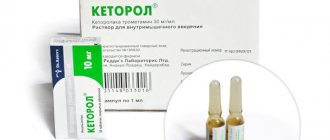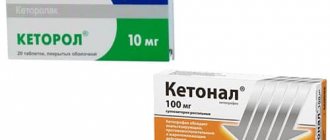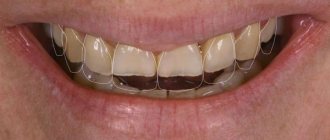Drug poisoning is a fairly common situation. Many people have an already formed habit of reaching for medications for any ailment, bypassing a doctor’s appointment. This problem is associated with the impossibility of obtaining medical care in a short time, and with the over-the-counter dispensing of many medications in pharmacies. Typically, the reasons for taking medications without a prescription from a specialist are headaches, gastrointestinal tract disorders, spasms, back and joint pain.
Poisoning occurs due to a number of factors:
- exceeding the recommended dosage;
- uncontrolled use of the prescribed drug. For example, taking a dose for several days at a time;
- taking a combination of incompatible drugs - two drugs, and/or alcohol incompatible with the drug;
- use of expired drugs;
- errors in choosing a medication.
Drug intoxication can lead to dangerous consequences for life and health. Therefore, for any ailments that appear while taking medications, consult a doctor immediately.
Drug poisoning. Uncontrolled use of medications is a common cause of poisoning.
Content:
- When does an overdose of Phenazepam occur?
- Consequences of an overdose of Phenazepam - symptoms.
- Chronic form of pathology.
- Diagnostics.
- How to provide first aid to a victim.
- Complications of an overdose of Phenazepam.
Phenazepam is a tranquilizer; the drug calms the nervous system, relieves anxiety, eliminates obsessive thoughts and fears, and helps normalize sleep. An overdose of Phenazepam can have the most serious consequences - from daytime drowsiness to coma and death.
The medicine is usually prescribed by psychiatrists and psychotherapists for insomnia, anxiety disorders, and to alleviate hangover syndrome as part of complex therapy. Available in pharmacies strictly according to prescription.
When does an overdose of phenazepam occur?
Despite the fact that Phenazepam is an excellent remedy for many pathological conditions, doctors often encounter an overdose of this pharmaceutical. The fact is that this medicine is quickly addictive, as a result of which people often independently increase the permissible dosage. The consequences of this can be: suicidal thoughts, impaired memory and coordination of movements, depression and even fainting.
In addition to cases where the pathology is caused by an increase in the daily dose, suicide attempts occur. People who decide to commit suicide take prohibitively large amounts of pharmaceuticals.
Another fairly common phenomenon is drug addiction. Just as a person becomes “addicted” to drugs or alcohol, he or she will be able to become unnoticed when taking a medication. This phenomenon is called “pharmacy drug addiction”; the consequences of an excess of Phenazepam are completely unpredictable.
Consequences of an overdose of Phenazepam - symptoms
At the first sign of an “overdose” in an adult or child, you should immediately consult a doctor. Symptoms of phenazepam poisoning manifest themselves differently, depending on the severity.
- In a mild form, the symptoms are almost invisible both to the person himself and to those around him. Weakness, slight drowsiness, ringing in the ears appear, and sometimes general health worsens. Doctors determine the consequences of such an overdose based on complaints; there are also objective manifestations: drooping of the upper eyelids, involuntary movements of the eyeballs.
- The consequences of slightly exceeding the permissible dose do not adversely affect health; they usually disappear after a night's sleep.
- In a condition of moderate severity, the symptoms are more clearly expressed. This is a retraction of the tongue with a violation of the swallowing process, muscle weakness, general lethargy, and some lethargy. The pupils narrow and react poorly to light.
- Sometimes there is a superficial coma, loss of consciousness, which is often mistaken for sleep. However, it is not possible to wake the person. The most dangerous thing in this case is the appearance of vomiting; the patient risks choking. Therefore, it is very important to urgently call an ambulance if such signs are present.
- The severe form is accompanied by deep coma, agony, and a complete absence of reflexes. Respiratory activity is depressed, the heartbeat is rapid, blood pressure drops to critically low values, and body temperature also drops sharply.
The consequences of severe overdose require immediate intensive care; without it, death is possible.
What does it contain?
One cigarette contains from 15 to 20 mg of nicotine, which can cause severe poisoning in a child and negatively affect the health of an adult. Adverse effects are also associated with the effects of other components:
- cadmium, arsenic;
- hexamine, which is a derivative of formaldehyde;
- anthracene, methanol;
- butane, nitrobenzene;
- acids – hydrocyanic and acetic;
- nitromethane, ammonia.
The volume of inhaled compounds depends on the smoking style, the presence of a filter and the type of tobacco. An overdose of nicotine and other components of a cigarette can occur at any time, since harmful substances have a cumulative effect.
Chronic form of pathology
Doctors often encounter cases where a patient takes the prescribed drug regularly, but slightly exceeds the recommended dosage. Such patients complain of constant drowsiness, fatigue, muscle weakness, and increased excitability. They are tormented by anxiety, tearfulness, migraine-type headaches, and sometimes hallucinations.
Objectively, shaking (tremor) of the arms and legs is observed, and convulsive manifestations are often noticeable. Taking this medication in combination with large doses of alcohol is especially dangerous. The consequences of overdose in this case require mandatory treatment and observation by a specialist.
How to recognize: main symptoms
Intoxication is possible in mild and severe degrees. In the first case, a common cause is the first attempt to smoke. The body reacts to this with the following symptoms:
- dizziness;
- noise in ears;
- gagging;
- increased heart rate;
- increased saliva production;
- spasms in the abdomen or larynx.
Mild intoxication usually goes away on its own. Within a few hours, not a trace remains of the symptoms. In rare cases, a person is still worried about weakness and headache. Signs of nicotine poisoning in severe form are more serious and pronounced. Unpleasant sensations often occur among active smokers who do not monitor the amount they smoke or smoke low-quality products. All signs are similar to a mild course, but they appear more intensely and only increase over time. In severe cases, the patient experiences:
- severe shortness of breath;
- delirious or faint state;
- convulsions.
A strong blow is dealt to the brain, which causes hallucinations, anxiety, lethargy, and thinning of blood vessels. Excessive amounts of toxins entering the body through smoking can cause an allergic reaction, impair vision, cause kidney failure or inflammation of the pancreas. Failure to provide assistance in a timely manner leads to coma or paralysis of the respiratory center.
Diagnostics
An experienced doctor will be able to make a diagnosis after examining a person and interviewing him or his relatives, and it is important to find out how long he took Phenazepam and in what dosage.
However, in order to make a correct diagnosis and decide on treatment tactics, an in-depth examination is necessary. To find out the exact amount of the drug in the blood, spectrophotometry is used. Heart rhythm disturbances and other organ pathologies are shown by an ECG. important to know the degree of acid-base imbalance in the blood; it is detected during a hematological study.
Causes and development of intoxication
Even after one puff of a cigarette, after a few seconds, harmful components enter the brain. The blood-brain barrier is not a barrier to the influence of carcinogens, under the influence of which the production of dopamine is stimulated, which is a consequence of the smoker receiving pleasure in the process. The hormone level begins to decline within 30 minutes, causing the desire to smoke again.
With dosed smoking, the activity of the autonomic ganglia is stimulated, which has a less severe effect on the body. If a neurotoxic compound enters the blood in large quantities, the ganglia are blocked, causing poisoning. Regular inhalation of smoke provokes a corresponding reaction in all human organs and systems.
There are two types of overdose - acute and chronic. The causes of type 1 intoxication are:
- prolonged close contact with chemicals containing nicotine;
- tobacco use at a young age; overdose often occurs in children and adolescents;
- smoking on an empty stomach, especially in the absence of nicotine tolerance;
- abuse of chewing gum and/or patches that contain nicotine;
- using tobacco tincture for treatment.
Overdose is often recorded in smokers who take short breaks between cigarettes. The chronic form occurs through passive inhalation of tobacco smoke. Symptoms are also observed in people who work in the production of tobacco products.
How to provide first aid to a victim
First of all, you need to induce vomiting (a pale pink solution of potassium permanganate helps to do this). Next, you need to give the patient an available sorbent (activated carbon or Enterosgel). To remove the drug from the gastrointestinal tract, you must also give a laxative or do a cleansing enema.
Remember that all these actions are possible only in cases where the victim is conscious. In an unconscious state, it is strictly prohibited to independently perform any manipulations at home, since this can cause even greater harm to the person.
High-quality therapy for a serious overdose of Phenazepam can only be provided by a doctor in a hospital. In a hospital setting, the patient is given gastric lavage, cleansing enemas and given medications to increase urination (forced diuresis). The Phenazepam antagonist, glucose and saline solution are administered intravenously.
Analgesic poisoning
Opioid analgesics
Narcotics with analgesic properties act centrally by activating endogenous opioid receptors.
These same neuronal structures are localized in areas of the brain and spinal cord responsible for other functions. Therefore, the overall range of effects is quite wide - against the background of expected analgesia, breathing, mental processes and smooth muscle tone are disrupted. Painkillers differ in strength, so the minimum significant dose for each of them will be different. An overdose of analgesics manifests itself as follows (using the example of morphine):
- dizziness
- nausea
- labored breathing
- general weakness
- vomit
- uncontrollable sleepiness
- disturbance of consciousness – stupor, stupor, fainting, coma
- sticky cold sweat
- pale skin with a bluish tint
- drop in body temperature
- acute retention of urination and defecation
- weakening and decreased heart rate
- breathing is shallow, frequent
- drop in blood pressure
- increased vascular permeability (edema)
- a sharp constriction of the pupil is miosis, but with increasing hypoxia (oxygen “starvation”) it expands – mydriasis
- muscle hypertonicity
- increased spinal reflexes, such as knee reflexes
- tremor
- convulsions
- intestinal atony - constipation, obstruction
- acute dilatation of the stomach
- encephalopathy
At the initial stages, you can suspect an overdose by noticing strange drowsiness, lethargy and shortness of breath. Moreover, the patient’s condition progressively worsens. Poisoning leads to life-threatening complications - pulmonary and cerebral edema, hypoxic myocardial damage (risk of cardiac arrest), acute renal failure (AKI). Without qualified assistance, death occurs as a result of depression of the respiratory center up to its paralysis in 75% of cases. The minimum lethal dose of morphine is 200 mg, fentanyl is 2 mg, and heroin is 60 mg.
After emerging from a coma, the development of irreversible consequences associated with prolonged hypoxia of the brain and internal organs is possible. Focal neurological changes in the form of paralysis and mental disorders occur.
Mixing opiates with alcohol, tranquilizers, barbiturates and other drugs increases the likelihood of poisoning, exacerbating the severity of the condition.
Non-narcotic analgesics
The group of non-opioid drugs is represented by dozens of substances of various chemical origins. Ideally, it is necessary to consider the characteristics of poisoning of each of them. However, the most common overdose is NSAIDs.
Paracetamol
The permissible daily dose of an antipyretic drug should not exceed 4 g. Death is most likely when 15-20 g of the substance is consumed. Overdose is characterized by the following symptoms:
- Liver damage - high hepatotoxicity! The main symptoms are heaviness in the right hypochondrium, jaundice, blood clotting disorders.
- Dysfunction of the gastrointestinal tract (GIT) – nausea, vomiting, epigastric pain, problems with stool.
- Neurosensory damage. Manifested by somnolence, weakness, and rapid progression of hepatic encephalopathy.
- Acute renal failure in the form of tubulointerstitial nephritis.
- Rarely - cardiomyopathy and nonspecific changes on the ECG due to the involvement of the cardiovascular system in general intoxication.
- Shock is a persistent drop in blood pressure against the background of a general clinical condition.
- Rhabdomyolysis is acute necrosis of striated muscles.
- Brain swelling.
Poisoning can be acute with the development of a typical clinic within 6-14 hours. With long-term use of increased doses, a cumulative overdose of the drug due to accumulation in tissues cannot be ruled out.
Paracetamol is often used for suicidal purposes. It is also part of the combined “pharmacy drugs” (“Spazmolex”, “Paratram”, “Zaldiar”), common in the recreational environment.
In world practice, paracetamol is the main cause of poisoning with hepatotropic poisons.
In a multicenter study conducted in the United States, over ten years since the late seventies, 11,195 cases of poisoning were registered, and in 1987, 60,000 cases of poisoning. A significant increase in the number of these poisonings has been noted over the past 10-20 years in France, Denmark, Norway and other European countries. A significant number of paracetamol poisonings is due to the widespread use and high availability of the drug.” CyberLeninka
Complications of an overdose of Phenazepam
In addition to coma, poisoning with this pharmaceutical drug causes complications in various organs and systems. These are severe mental disorders, pathologies of the liver and kidneys, inflammatory processes in the genitourinary system, malfunctions of the gastrointestinal tract and the central nervous system.
In order to minimize risks, it is necessary to consult a doctor at the first symptoms. Remember that in this case, delay or independent attempts to remove the patient from a serious condition often lead to complications and even death. Don't waste your precious time and consult a doctor.
Literature:
- Avrutsky, Grigory Yakovlevich / Emergency care in psychiatry / Moscow: Medicine, 1979. - 191 p.
- Kozlovsky, Vladimir Leonidovich./ A short reference book on psychopharmacology, pharmacotherapy and mental pathology - St. Petersburg: SpetsLit, 2015.
- Fomichev, Alexey Vyacheslavovich. / Assessment of impairments of mental and physical performance in acute non-severe poisoning with neurotropic substances and their pharmacological correction with antioxidants: Clinical experimental study: abstract of thesis. ... Candidate of Medical Sciences: 14.00.05, 14.00.20 / Military medical. acad. them. CM. Kirov. - St. Petersburg, 2004. - 20 p.






